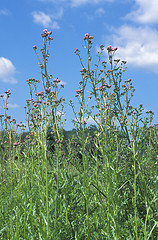Things To Know About Seasonal Allergy Relief
 Seasonal allergies, also called “hay fever,” are triggered each spring, summer, and fall when trees, weeds, and grasses release pollen into the air. When the pollen ends up in your nose and throat, it can bring on sneezing, runny nose, coughing, and itchy eyes and throat. Pollen counts tend to be the highest early in the morning on warm, dry, breezy days and the lowest during chilly, wet periods. People manage seasonal allergies by taking medication, avoiding exposure to the substances that trigger their allergic reactions, or having a series of “allergy shots” (a form of immunotherapy).
Seasonal allergies, also called “hay fever,” are triggered each spring, summer, and fall when trees, weeds, and grasses release pollen into the air. When the pollen ends up in your nose and throat, it can bring on sneezing, runny nose, coughing, and itchy eyes and throat. Pollen counts tend to be the highest early in the morning on warm, dry, breezy days and the lowest during chilly, wet periods. People manage seasonal allergies by taking medication, avoiding exposure to the substances that trigger their allergic reactions, or having a series of “allergy shots” (a form of immunotherapy).
People also try various complementary approaches to manage their allergies. According to the 2007 National Health Interview Survey, “respiratory allergy” is among the 15 conditions for which children in the United States most often use complementary approaches. If you are considering any complementary health approach for the relief of seasonal allergy symptoms, here are some things you need to know.
- Nasal saline irrigation. There is reasonably good evidence that saline nasal irrigation (putting salt water into one nostril and draining it out the other) can be useful for modest improvement of allergy symptoms. Nasal irrigation is generally safe; however, neti pots and other rinsing devices must be used and cleaned properly. According to the U.S. Food and Drug Administration, tap water that is not filtered, treated, or processed in specific ways is not safe for use as a nasal rinse.
- Butterbur extract. There are hints that the herb butterbur may decrease the symptoms associated with nasal allergies. However, there are concerns about its safety.
- Honey. Only a few studies have looked at the effects of honey on seasonal allergy symptoms, and there is no convincing scientific evidence that honey provides symptom relief. Eating honey is generally safe; however, children under 1 year of age should not eat honey. People who are allergic to pollen or bee stings may also be allergic to honey.
- Acupuncture. Only a few small studies have been conducted on acupuncture for relief of seasonal allergy symptoms, and the limited scientific evidence currently available has not shown acupuncture to be beneficial in treating seasonal allergies.
- Talk to your health care provider. If you suffer from seasonal allergies and are considering a complementary health approach, talk to your health care provider about the best ways to manage your symptoms. You may find that when the pollen count is high, staying indoors, wearing a mask, or rinsing off when you come inside can help.
